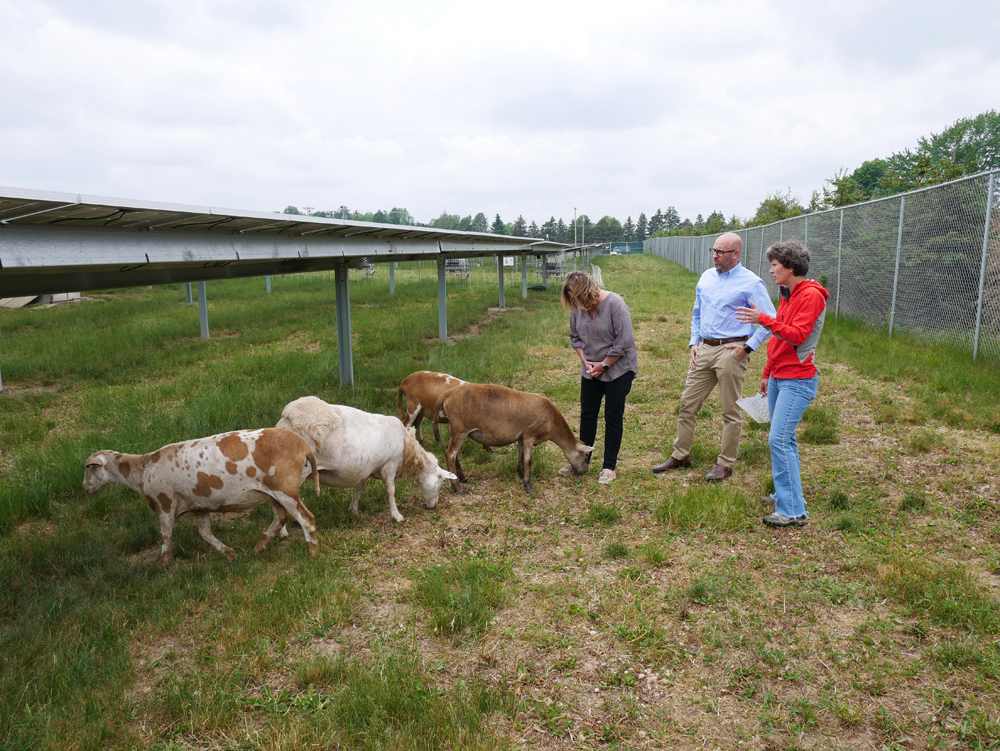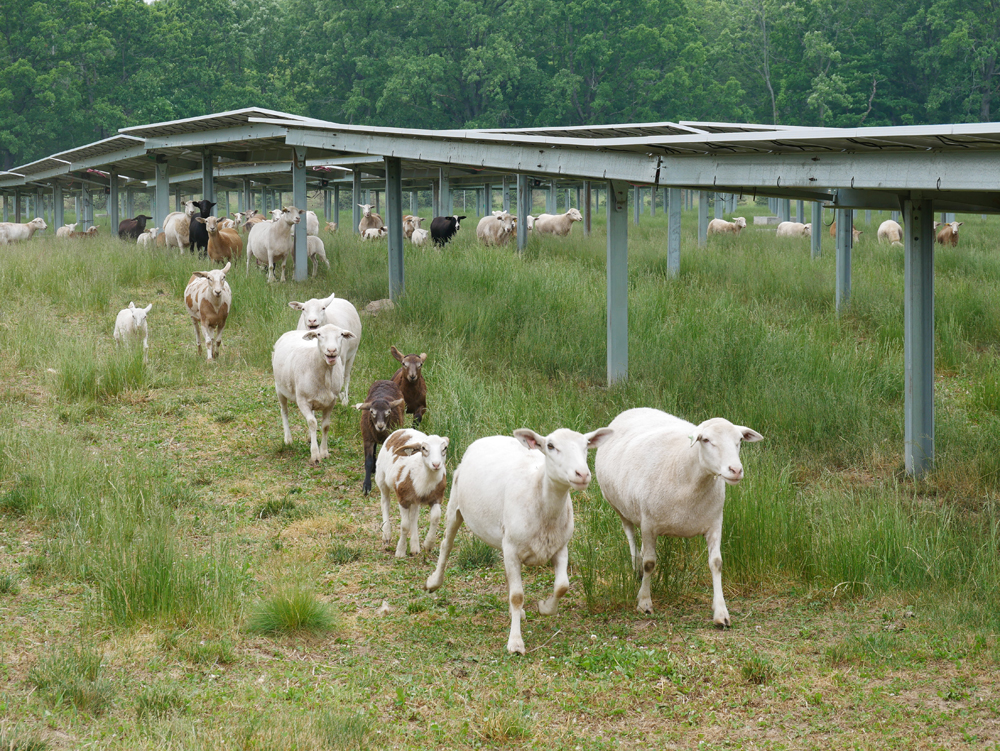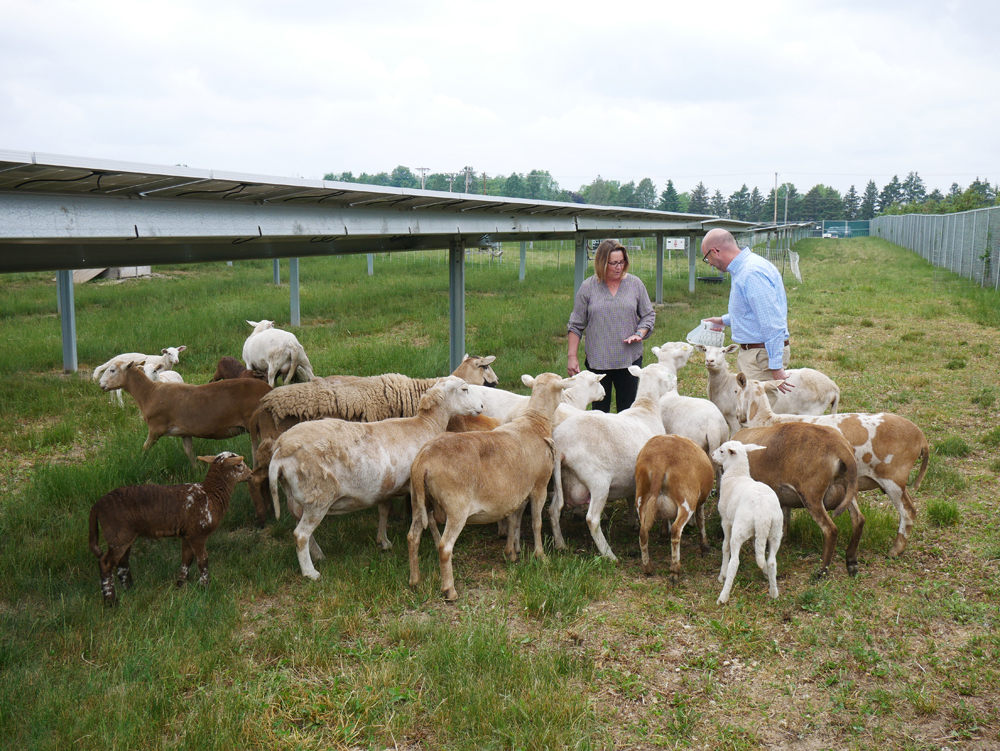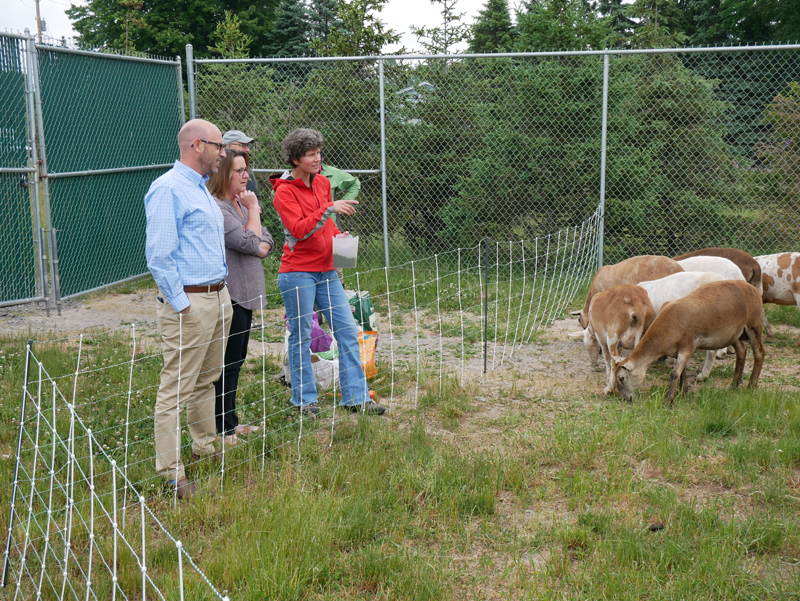How sheep are bringing the “farm” to solar farms in Ogden

by Mike Zale,
Ogden Town Supervisor
Sheep and solar energy. Until recently, I never would have imagined how these two very different things could be linked. That is, until Town Clerk Noelle Burley, Assistant Building Inspector Sue Duggan and I took an impromptu workday field trip to a local solar site on Whittier Road to meet with a farmer who is revolutionizing the way we utilize land for both agriculture and industrial purposes in the town.
When we arrived at the solar field, we were greeted by Olesya Haze, owner of TIM Farms, and her flock of sheep. Within the confines of the perimeter fences, the flock happily devoured grass and other vegetation growing amid the solar panels, not the least bit concerned by the onlooking spectators.
It’s called solar grazing, also known as agrivoltaics, the practice of simultaneous use of land for solar panels and agriculture. TIM Farms launched in 2018, when the owners moved to Ogden and purchased their first sheep. Since then, their flock has grown exponentially, and they have begun selling their stock and whole lamb to the local community and beyond.
With an eye for pasture, they noticed all the unutilized vegetation within solar fields as prime landscape for sheep grazing. They contacted the owners of these solar sites and proposed a collaborative approach that would bring the “farm” to the solar farm. The response was overwhelmingly positive, and their flock now provides vegetation management services at the neighboring solar site on Whittier Road
Overgrown vegetation can shade and damage solar panels, so these sites must be regularly maintained. The standard mowing approach is both costly and tedious, and the land beneath the panels serves no real purpose.
That’s where the sheep come in. They consume the grass, weeds, tree seedlings and other vegetation, keeping the panels in peak operation. In turn, the panels provide shade on hot summer days, and shelter from the rain. The sheep also play a vital role in improving the soil, echoing the success of strip mine reclamation programs that restore degraded lands.
TIM Farms solar sheep project is among the first in our region and I’m sure it won’t be the last. It truly demonstrates the potential of combining energy with agriculture and maximizing land use for everyone’s benefit. It’s a win for the sheep, the farmers, and the owners of the solar fields.
Thank you to Olesya for allowing us to come by for a visit and for teaching us about this fascinating method. It’s a good day when you learn something new and get to feed alfalfa to a flock of sheep. We look forward to visiting again soon.







